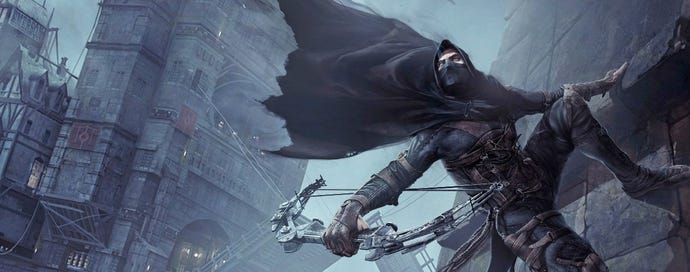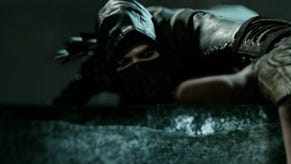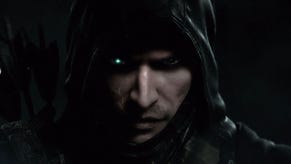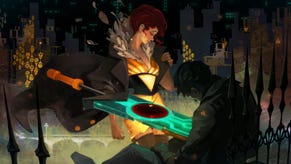To Catch a Thief
The fourth Thief game is out next February. Isn't it about time you caught up with Garrett's misadventures?
This article first appeared on USgamer, a partner publication of VG247. Some content, such as this article, has been migrated to VG247 for posterity after USgamer's closure - but it has not been edited or further vetted by the VG247 team.
Stealth games are hard to get right. When stealth sections are forced into games where the concept doesn't belong, no-one has any fun. When your whole game is built around stealth, though -- such as in the Thief series -- things get really fun.
Eidos-Montréal and Square Enix announced today that the long-awaited fourth installment in the Thief series would be available on February 25 of next year on Windows PC, PlayStation 3, PlayStation 4, Xbox 360 and Xbox One. Here's a brand new trailer.
February's a long way off, though. Why not check out the rest of the series in the meantime? Here's why you should at least consider it.
Thief: The Dark Project
The first game in the series -- which was, in its early form, the brainchild of Ken "BioShock" Levine -- came out in 1998, and made use of Looking Glass Studios' own Dark Engine, which later went on to power System Shock 2. It introduced the player character Garrett, who remains the series' protagonist to this day, and also to the concepts that helped define the series -- though some may argue it's drifted in a slightly different direction since these early days.
Thief was a departure from other first-person perspective titles of the time in that there was a strong emphasis on avoiding combat rather than rushing in all guns blazing. Generally speaking, if you had to draw your sword and engage in direct confrontation in Thief, it was probably time to reload your last save and try again, because although Garrett is agile and able to fend for himself in a fight, he's not overly skilled with a sword.
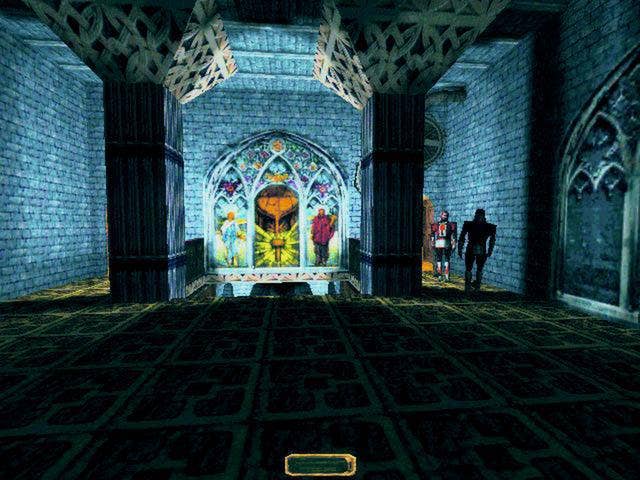
The game's emphasis on avoiding confrontation led Looking Glass to develop a number of game mechanics that hadn't really been seen before in other similar games of the time. Specifically, Thief demanded that you pay particular attention to the amount of light in any given area, and also to the amount of noise you were making. An on-screen marker depicts how likely it is that someone will spot you , but after a while it becomes second nature to hide in the shadows and move carefully across floor surfaces that make minimal noise such as carpet.
One of Thief's biggest strengths was that its levels were unscripted, meaning you were largely free to determine how to approach your objectives using the tools you had at your disposal. It was always -- in theory, at least -- possible to rush in flailing wildly with your sword and cut down everyone in your path, but it was usually much more effective to take your time and carefully calculate the optimum route. The team specifically made it so that all of the missions could be won without killing any humans.
In order to achieve a non-lethal playthrough, you could manipulate the environment and the game's artificial intelligence routines to a certain extent. Elemental arrows could douse flaming torches, clean up bloodstains or spread moss across the floor to mute your footsteps, for example, and it was also possible to pick up and move unconscious or dead bodies, as well as make use of special items like flashbangs to deal with troublesome guards.
Thief 2: The Metal Age
The Metal Age came out two years after The Dark Project, and made use of the same Dark Engine technology, with a few enhancements such as colored lighting.
Like its predecessor, levels are non-linear and unscripted, and thus can be approached in a variety of different ways. However, following some criticism over the more supernatural/horror elements of later missions in The Dark Project, the emphasis was put back on Garrett doing what he did best: sneaking around inside rich people's sprawling mansions and stealing their stuff.
Although Thief 2 was a good game, many criticized it for being too similar to the original Thief, particularly on the graphical front. Many of the more notable enhancements were under the hood of the game rather than readily visible -- for example, the NPC AI underwent an overhaul which gave the guards more different "states" rather than the three-state "unaware, suspicious, aggressive" system of the original game. In Thief 2, sometimes they'd raise the alarm upon becoming aware of the player rather than immediately attacking.

Thief 2 also made use of much larger levels than its predecessor, with many taking several hours to complete. The game's narrative was structured across three acts, which helped define the type of missions you'd be indulging in at any given point -- in the first act, you were mostly performing, in the developers' words, "classic thieving runs"; in the second, you were investigating a conspiracy; in the third, you took on the role of an agent operating from a base in an attempt to achieve specific objectives and take down the aforementioned conspiracy.
Thief 2 is also noteworthy for spawning one of the most impressive fan-made projects of all time, which came about partly in response to the closure of Looking Glass Studios some time after Thief 2's release, though it ended up being released in 2005, a year after the official third game finally arrived.
Thief 2X: Shadows of the Metal Age, as the unofficial expansion is called, takes the focus off Garrett and onto a new female protagonist called Zaya. This is no quick hack job with a few extra levels -- it's a whole extra campaign, featuring new intro and ending sequences, voice acting, original artwork and animated mission briefings. You can grab it here.
Thief: Deadly Shadows
When Looking Glass closed its doors, many fans of the series were worried they'd never get another experience quite like Thief, and indeed for four years it looked like that was going to be the case, Thief 2X aside.
However, it was eventually Ion Storm -- best known at the time for the excellent Deus Ex and John Romero's disastrous vanity project Daikatana -- who came to the rescue, in partnership with publisher Eidos. As it happens, Ion Storm was actually made up of a number of Looking Glass employees, so it wasn't as if the game was in completely new hands.
Deadly Shadows saw some big changes for the series, though. For starters, it was developed simultaneously for PC and the original Xbox, rather than as a PC exclusive. It also moved from the proprietary tech used in the first two games to the modified Unreal engine used in Deus Ex: Invisible War. This allowed for a number of features that were eminently suitable for the Thief series' stealthy gameplay -- most notably dynamic shadows and a better sound propagation system based on architecture, the presence (and state) of doors and windows, and the materials used to construct the floors, walls and ceilings of various rooms.

Deadly Shadows wasn't called Thief III for fear of alienating console gamers who had never encountered the first two installments, but the name change was also appropriate in that the gameplay had undergone something of an overhaul, too.
The game was still made up of discrete missions, but now there was an explorable city that Garrett could wander through and cause mischief between assignments. In the city, you could steal from other people, undertake sidequests and fence stolen materials, or even ally with factions to help protect yourself from the unwanted attention of the guards.
Deadly Shadows used a deliberately clunky map system -- rather than a conventional automap, you simply had a hand-drawn map that did not indicate your location, and you instead had to determine it for yourself using nearby landmarks. Initially a pain, yes, but it forced you to pay attention to the environment around you rather than staring at a minimap -- something that a lot of games do the exact opposite of today.
Where to Catch a Thief
The easiest place to get hold of all these games today is probably Steam, where they're available together for $18.99. Conveniently, however, as I type this, the complete package is available for 75% off its usual price, dropping the price to under $5 for three great games.
If you'd rather acquire the games from somewhere other than Steam, you can also find them on GOG.com for $9.99 each or in a triple pack for $18.96.
